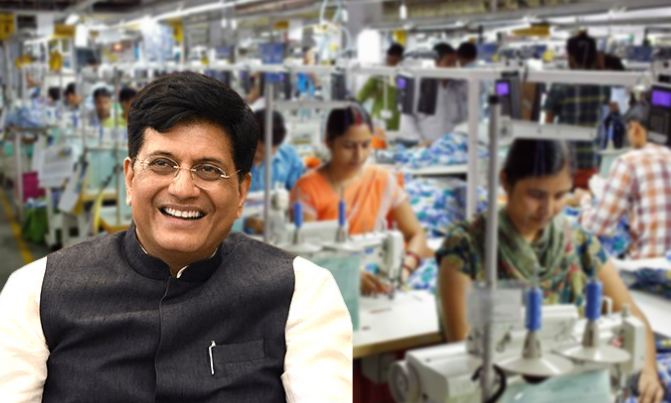India used to be a global leader in the textile industry from the beginning of history to the mid-18th century. Every region, from Varanasi to Kancheepuram and Bengal to Gujarat had unique textile varieties that were exported across the world. However, industrialization and the discovery of synthetic fibre snatched India’s enviable position in the production of fibre as well as the end product.
After Independence, India’s textile industry started booming once again but it has not been able to claim the enviable position that it used to hold for more than three fourth period of global human history. Under the AatmaNirbhar Bharat Abhiyan, the textile sector is being prioritised and PLI has been announced for man-made fibre & technical textiles.
The textile sector is crucial for AatmaNirbhar Bharat because the focus of this Abhiyan is not on import substitution but to enable Indian manufacturers to dominate the global markets. Thus, the textile sector is very essential to the investment-driven, export-led economy that the country aims to achieve under AatmaNirbhar Bharat Abhiyan.
With the government’s renewed focus on the textiles sector under the leadership of Piyush Goyal, India’s textile export can touch 100 billion dollars from 40 billion dollars at present.
Speaking at the 44th Foundation Day of the Apparel Export Promotion Council (AEPC), Textiles Secretary Upendra Prasad Singh said the country’s apparel industry must focus on vertical integration to increase its scale and size and to benefit from the production-linked incentive (PLI) scheme.
“Apparel and garmenting is not very investment-centric but it is important from the employment point of view. Perhaps, there is a need for backward integration and more of you can get into integrated value-chain like spinning and weaving,” Singh said.
The textile sector is the second-largest employer in the country after agriculture, employing around 4.5 crore people. The textile industry is worth $150 billion and contributes around 5% to the country’s GDP.
India is the sixth-largest exporter in the textile and apparel sector with exports being stagnant at around $40 billion for the last few years. In FY 22, it is set to grow in double digits for the first time in many years. The imports are around $8 billion, so the country is still a net exporter of textiles and apparel but far from its historical position or its potential.
However, India is losing to smaller players like Bangladesh, Vietnam, and Cambodia as well as to bigger and already established ones like China, Germany, and Italy. In the global textile market of $1 trillion, India’s share is still minuscule. Thus, there is a lot of room for India to increase its share in global exports.
Stating that textiles have always been among the top priorities of the government, the textiles secretary said, “There are a lot of big opportunities. The demand continues to be robust and China plus one sourcing strategy by the west is certainly a great opportunity for us.”
Textile is one sector where the country has huge potential for exports growth. The Economic Survey in the last few years made it very clear that the broad direction for the political economy will be an investment-driven, export-led model that made East Asian countries rich in a very short period.
Being a labour-intensive sector, the textile industry is a win-win on the exports and employment front. To achieve the $5 trillion GDP by FY 25 and $1 trillion in goods exported by 2030, exponential growth in textile export is essential.
For thousands of years, Indian textile manufacturers emptied the coffers of Romans by supplying the finest textile products. On the economic front, the history of India goes parallel with the story of its textile sector. To become a dominant global economic power, the country must become a dominant force in the textile sector.
